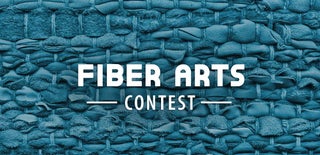Introduction: Sewed Leather Mask
This mask is not invented to be used as protection for any type of virus ( maybe a computer virus ). Is meant for costume or motorcycle riding for example.
Pattern provides easy to cut lines and punch/hole locations.
Supplies
Pattern available at www.theleatherpattern.com
- 1 letter size Leather piece in 2-3oz or more, any type would work but firmer is better
- X-ACTO #2 https://amzn.to/2wlyojg
- 6mm spacing Hole Punch Set https://amzn.to/2J98HoC
- Maine Thread https://amzn.to/2QBLHTj
- John James Needles https://amzn.to/2QBLHTj
- Multiple size punch holes https://amzn.to/2QBLHTj
- Nylon hammer https://amzn.to/2QBLHTj
- Gum tragacanth for edges https://amzn.to/2QBLHTj
- Dremel Burnisher https://amzn.to/2QBLHTj
- Cutting Mat https://amzn.to/2QBLHTj
- Stainless Steel Ruler https://amzn.to/2QBLHTj
- Copper or any type of rivet if you choose not to sew
Step 1: Print the Pattern
Start by printing the pattern. It needs to be printed at 100% scale in a letter size page. You can make sure if it was printed properly when measuring the pattern scale at the bottom as it will measure 3cm.
Step 2: Tape Pattern to Leather
Cut excess paper from the pattern ( outside all lines ) and the proceed to tape those to the leather. With the tape on you should still be able to see the line/holes from the pattern.
Step 3: Punch the Holes
Now its time to punch all the holes marked in the pattern. This holes have been spaced precisely 6mm on center so you will either need to use a prong with that spacing or a single hole punch.
For the strap section you have the choice either to use rivets or sew them so that will dictate what to punch on them.
If you have a corner punch tool that makes it easier also.
Step 4: Cut It Out
Now its time to cut the piece out. Follow the line with a firm and steady wrist. Using a fresh xacto knife blade will provide you with an easy and precise cut. If your leather it to thick for a single cut then score first and do a second pass to release.
Some lines in the pattern can take advantage of a ruler or guide and thus just leaving the curves to a handfree cut.
Step 5: Prep the Edges ( Optional )
Once the parts are all cut out, you can prep the leather edges for burnishing which will give it a more professional look among other things.
Start by sanding irregularities that you see, i also do a motion to "chamfer" the top edge so that when burnishing it will kind of get rounded. Then i apply a small amount of burnishing compound ( saliva also works ) and proceed to burnish. I have a special attachment for my dremel but any other method will work including using canvas, wood or anything else that would apply heat.
Step 6: Add Rivets
Here is were the rivets are used in on lt the 2 most external holes of each. I chose cooper rivets because it gives a great contrast and look good.
So the process is add the rivet passing it trough the both pieces and then adding the ring that gets hammered in place, i use a special tool but a pliers would achieve the same result, cut the excess and then round the remaining.
Step 7: Hand Sewing
Its difficult to explain in writing so the images will prove to be the best guide. You will need 2 needles for this.
First calculating the amount of thread needed, most projects just need 4x the distance to be sewed for thread but since this will be double on each hole plus a longer travel on the back i suggest you go at least 6x just to be sure.
Thread the needle and the pierce the thread with the needle to create a U shape, from there just pinch and pull that in the direction of the thread. Do this for both needles.
Now go and insert each threaded needled to each of the first holes from face to back and make sure you have the same amount of thread. Take one of the needles and cross it over to the second row of holes, meaning go left to right or vice verse and bring it up from the back to the front, same with the other thread. Continue doing that pattern until you reach the end, you should end up with both threads in the inside. Here just do some double knot, cut excess and burn the down a little just to solidify that knot.
The video in the instructable shows this in better details.
Step 8: Elastic Band
Final assembly now. You can use anything you've got on hand but i used a pieces of elastic, making sure to pass it in sequence.
Put in on, measure were does it feel its providing good fit and just do a couple of knots.
Step 9: End
Thats it, here are some more close up looks of the finished project.

Participated in the
Fiber Arts Contest












